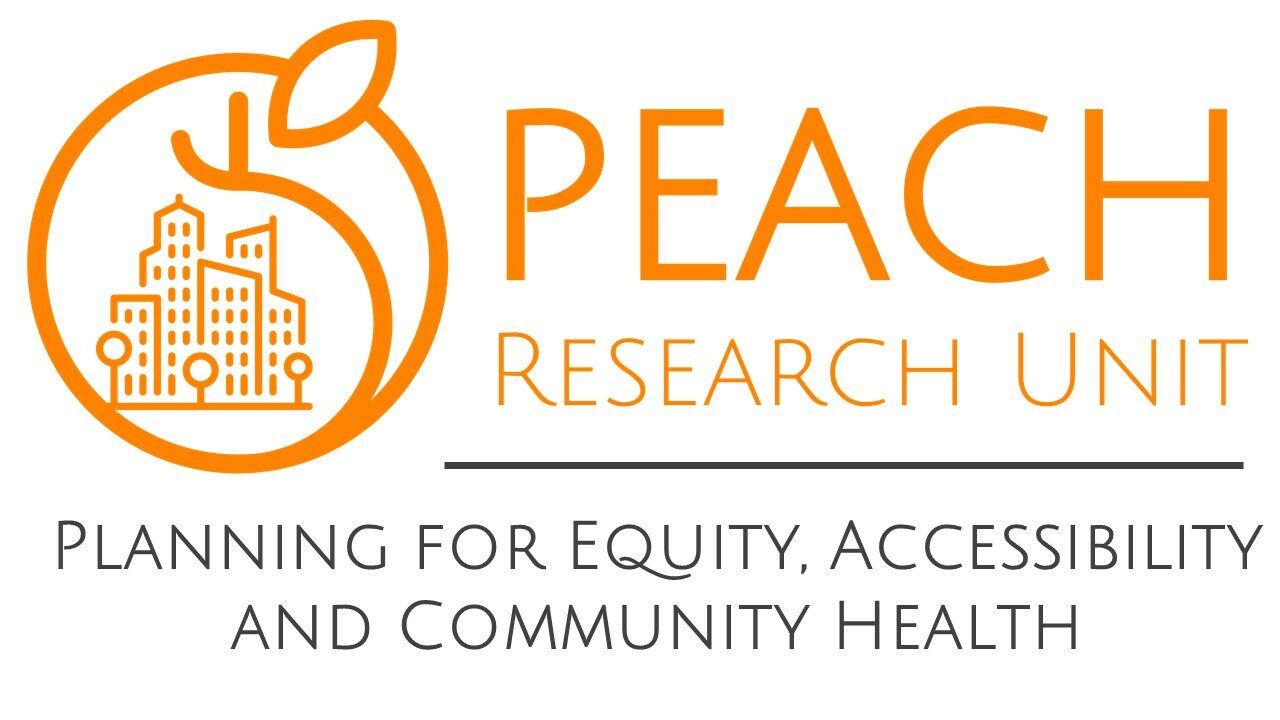The Rick Hansen RHFAC Survey

In 2018, we partnered with the Rick Hansen Foundation to learn more about what motivates building developers, owners, and managers to make their buildings meaningfully accessible by surveying industry and non-industry stakeholders. The survey had 132 respondents. Survey respondents represented a variety of industries including construction, property investors/owners, and building management companies.
The survey was divided into four sections:
- Professional Experience
- Potential Benefits of Accessible Building
- Barriers to Accessible Building
- Incentives for Accessible Building
Each question included in the survey was designed to inform the question: what incentives do those who develop, own, or manage buildings or public spaces receive from the RHFAC?
What incentives do those who develop, own, or manage buildings or public spaces receive from RHFAC?
What is the RHFAC?
The Rick Hansen Foundation (RHF) is working towards meaningful access in the built environment through the RHF Accessibility Certification (RHFAC) program. ‘Meaningful access’ means designing buildings beyond regulation standards to meet the physical accessibility needs of all people. The RHFAC program gives recognition through certification to those who develop, manage, or own buildings and public spaces that meet the design standards for meaningful access.
Why perform this survey?
Statistics Canada (2012) estimates that approximately 1 in 7 Canadians will experience some type of disability in their lifetime. This number is expected to increase as Canada’s population ages. Therefore, buildings, streets, and outdoor spaces must be designed to meet the accessibility needs of all Canadians. However, minimum accessible design standards often do not meet the accessibility needs of all people.
While social benefits of meaningful access are well-documented, it is less clear how stakeholders perceive the benefits of meaningful access through RHFAC. To further understand what motivates developers, owners, and managers to pursue meaningful access, Dalhousie University and RHF performed a survey of industry and non-industry stakeholders.
What did we learn?
The first section of the survey was meant to identify RHFAC participation rate and the level of knowledge about universal access among survey participants. Of the respondents, 26 (20%) reported that they used buildings certified under RHFAC, whereas the majority (61%) of respondents did not. There were 25 respondents (19%) who did not know if they used buildings that were RHFAC.
This section also asked participants about their familiarity with universal design principles. Universal design seeks to create an environment that can be accessed and understood by all users regardless of ability. While universal design is a core component of RHFAC, no respondents reported being “extremely familiar” with universal design principles. Instead, the majority of respondents (49%) felt like they were only “somewhat familiar” with universal design principles. These results indicate that more can be done to promote RHFAC so to ensure industry stakeholders are aware of their building’s certification status. Additionally, these results indicate that education around the goals and principles of universal design standards could be further developed to increase participation rate.
Reported Benefits
The next section of the survey asked respondents to identify potential benefits to having buildings certified by the RHFAC program. Respondents were asked to select ‘any that apply’ from a list of possible financial benefits. The top three selections were:
- increased patronage from a wider market (115/132 individuals);
- reduced costs from preventing injuries (96/132 individuals); and,
- improved quality and design (96/132 individuals).
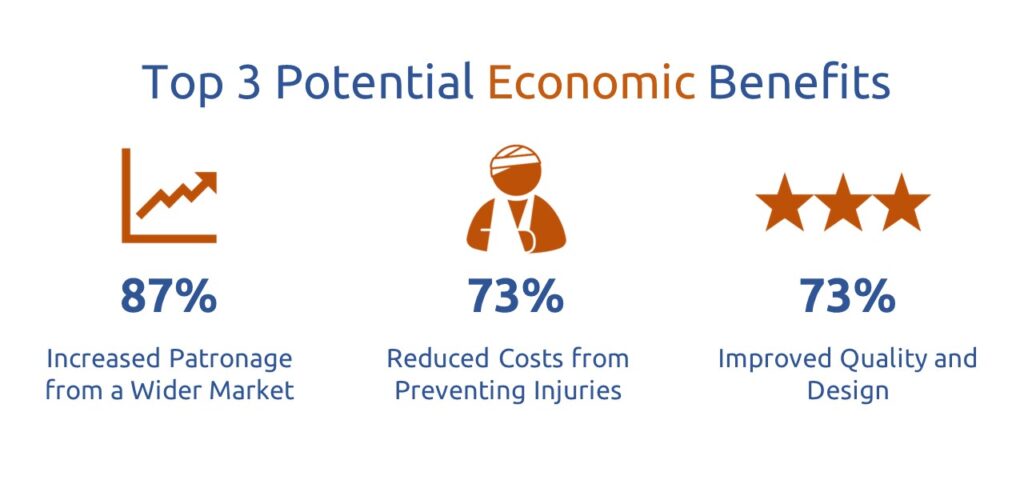
While increased market exposure was commonly identified as the most significant financial benefit of RHFAC, improved safety was also frequently recognised as a benefit of RHFAC. In addition, almost all survey participants (122/132 individuals) identified equity and social inclusion as a primary benefit of RHFAC. The safety and comfort of patrons (119/132 individuals) was identified as the second most important non-monetary benefit, followed by flexible design for users of all ages (111/132 individuals). Regardless of the type of benefit (monetary/ non-monetary), user safety was identified as a top incentive for pursuing RHFAC.
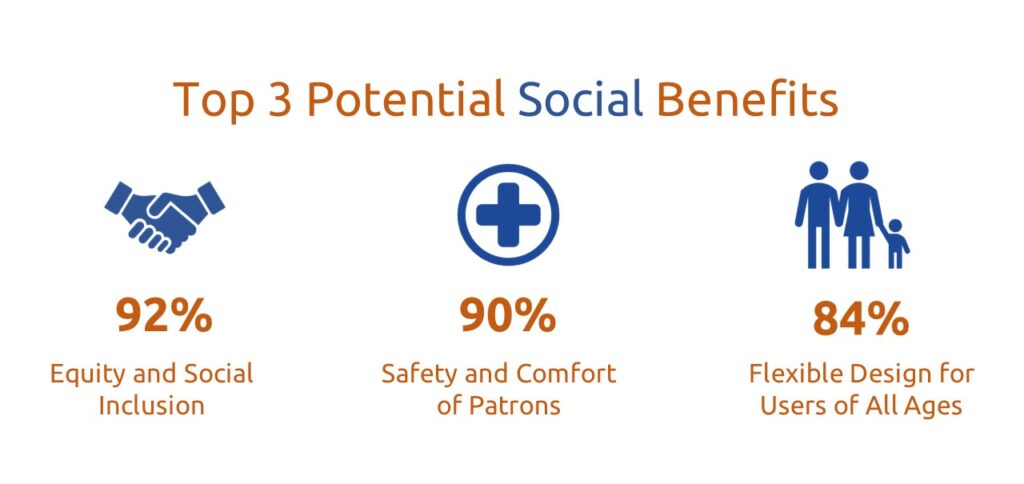
Reported Barriers
The third section of the survey asked about the financial and logistical barriers to pursuing meaningful access through RHFAC. Respondents reported that construction cost was the biggest hurdle to accessibility (81%). Other financial barriers identified by survey participants include: lack of funding/incentive programs (62%) and a more complex and time-intensive design process (44%). Other financial concerns identified by respondents include: affordability for tenants and owners if cost of development increases, the cost of retrofitting existing spaces, and buy-in from city council.
While the overall costs associated with designing to RHFAC standards were identified as a significant barrier, survey respondents identified the overall lack of tools and knowledge of accessibility within the industry as the primary non-financial barrier (67%). This reflects the finding that no respondents were “extremely familiar” with universal design and suggests that lack of knowledge and education on accessibility and design is a significant challenge to increased participation in RHFAC. Conflicting regulations and standards (46%) was also identified as a significant barrier. Other barriers include: challenges in incentivising industry stakeholders to go beyond minimum standards and slow approval process by city council.
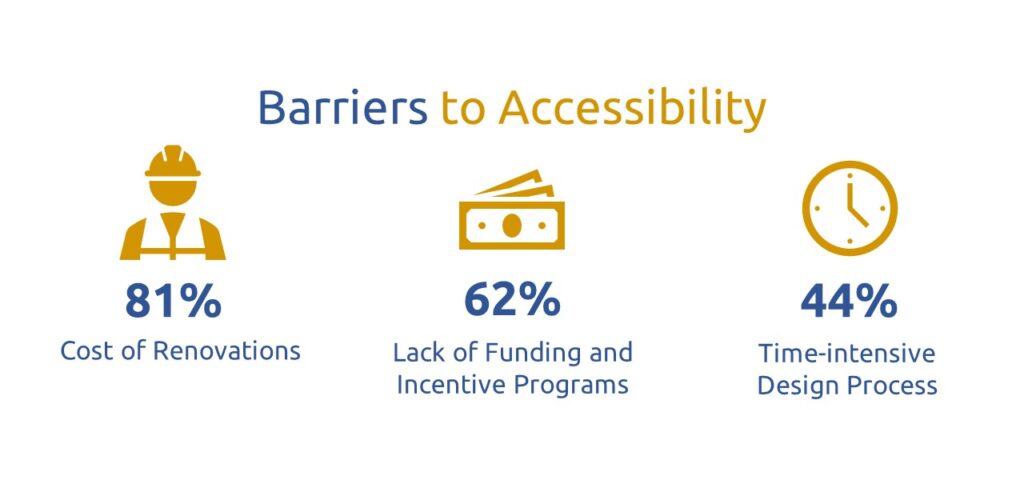
Incentives
Lastly, section four asked what sort of incentives could be put in place to increase RHFAC participation rate. Financial incentives in the form of grants (83%) and rebates (69%) were identified as feasible options for increasing participation rate. Further, easing the financial appraisal process (76%) was also identified as a strategy for promoting meaningful access. Survey participants again cited the need for increased education and awareness around accessibility and universal design. Respondents reported that certificate programs, awareness campaigns, and training and support during the design process would incentivize industry stakeholders to work towards RHFAC.
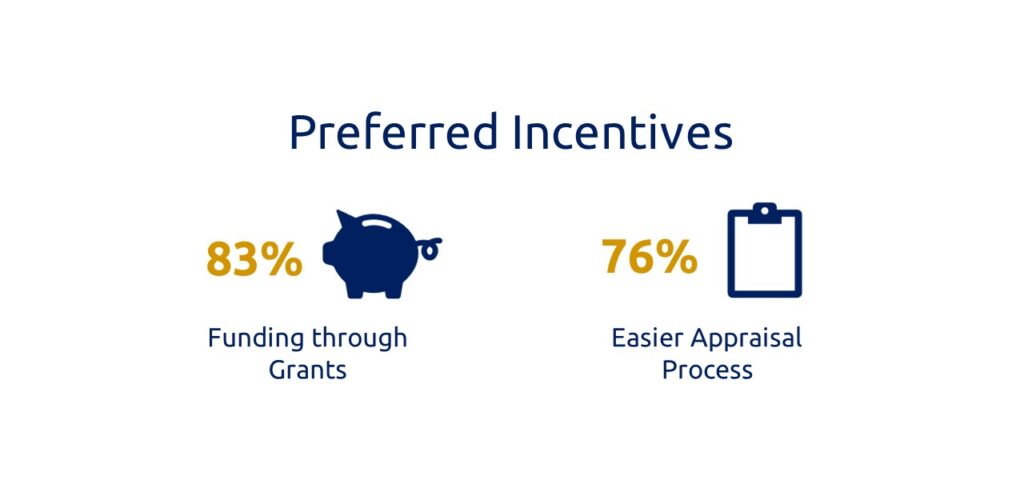
Survey participants again cited the need for increased education and awareness around accessibility and universal design.
The RHF survey considered a variety of factors that influence decisions around building for meaningful access. The results indicate that lack of awareness around accessibility and universal design is a significant barrier to widespread adoption of RHFAC. While both industry and non-industry stakeholders cited lack of education as a key barrier, the survey shows that there is demand for increased education and awareness about the benefits, opportunities, and implementation strategies of meaningful access. Increased patronage from a wider market is one of the most tangible benefits for those who do business in RHFAC buildings. However, survey respondents also cited “public safety, social inclusion, and equity” as one of the main incentives for pursuing RHFAC. The survey results indicate that education campaigns and financial incentives in the form of grants and rebates have the potential to significantly increase the likelihood that those who own, build, or manage buildings pursue RHFAC.
